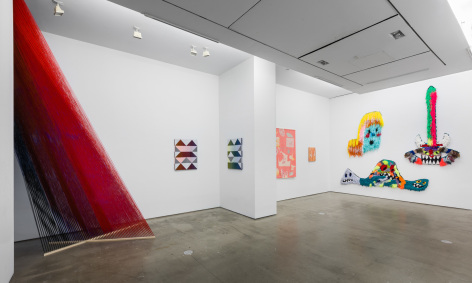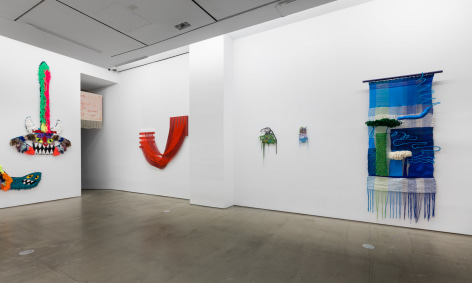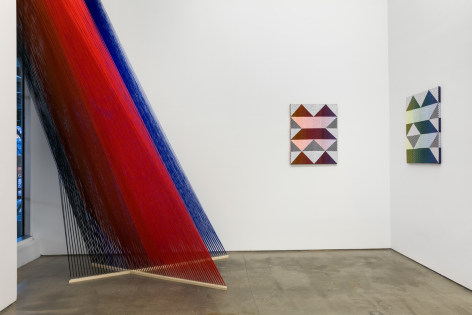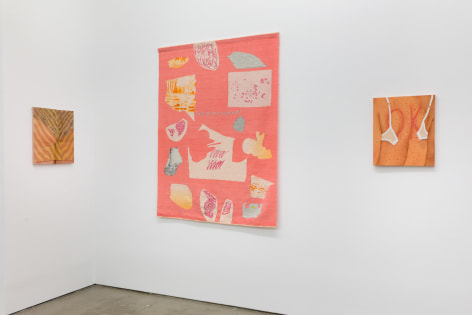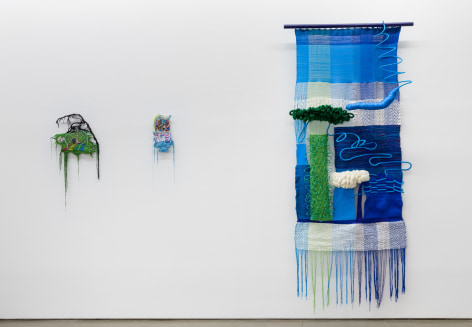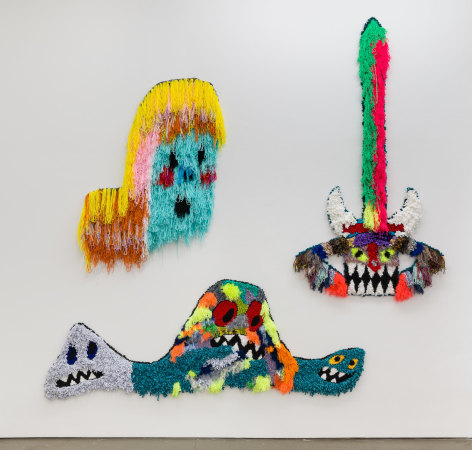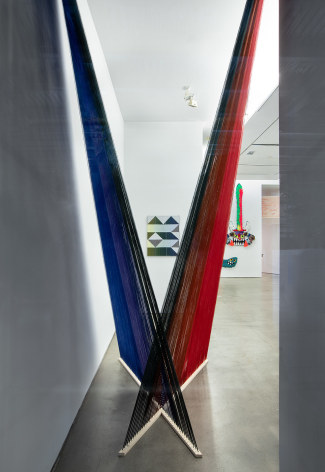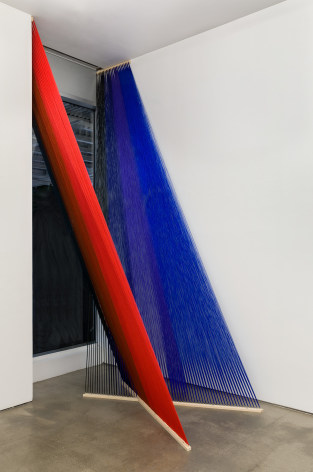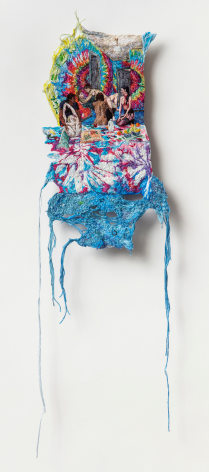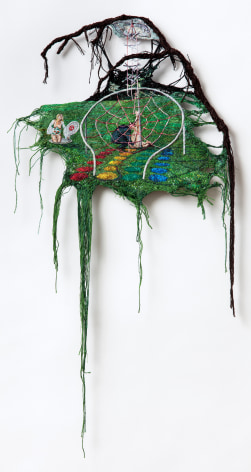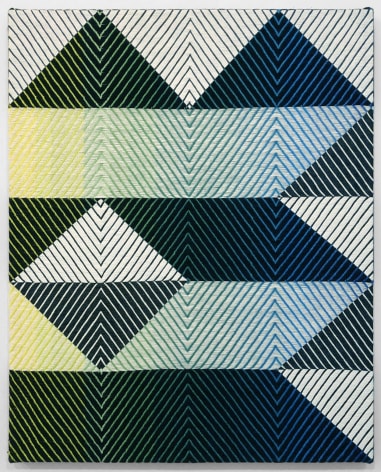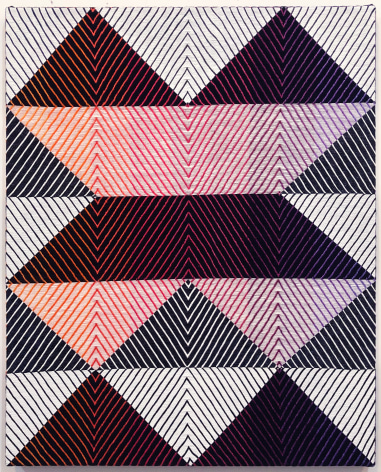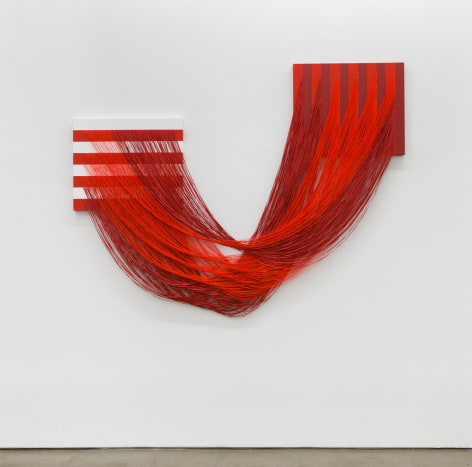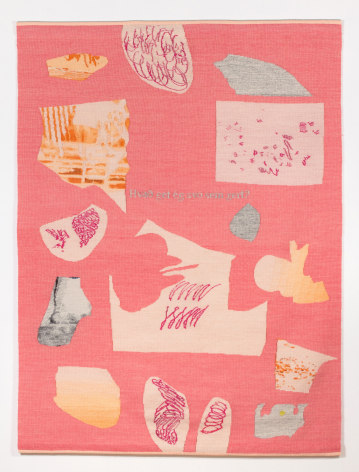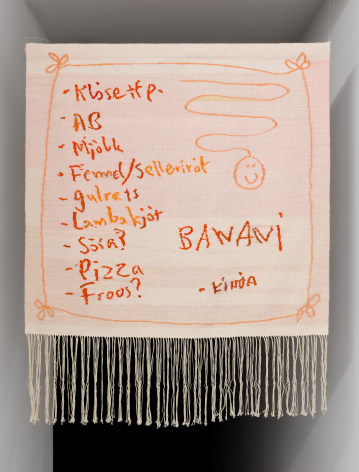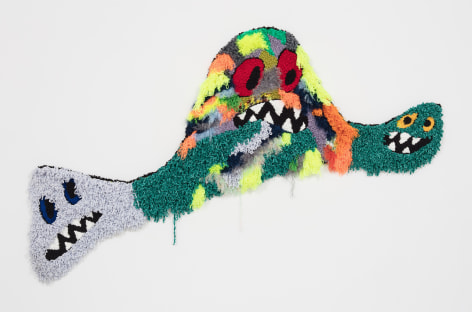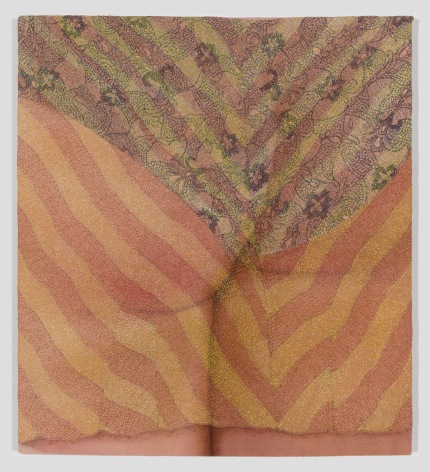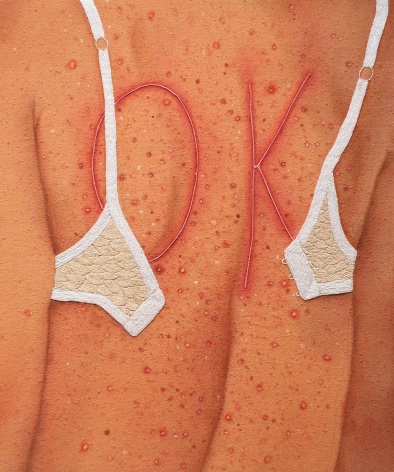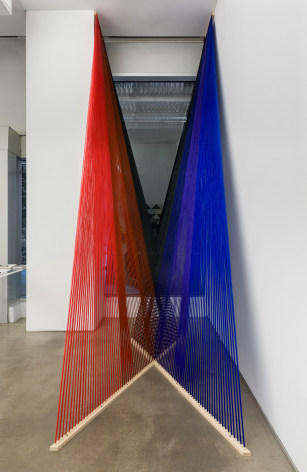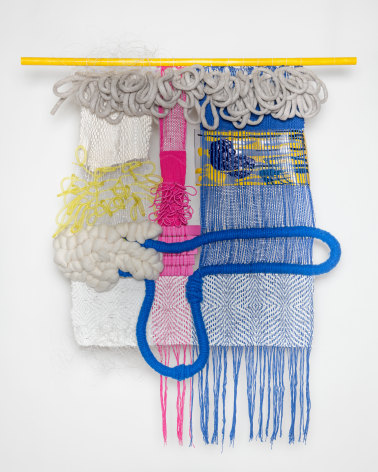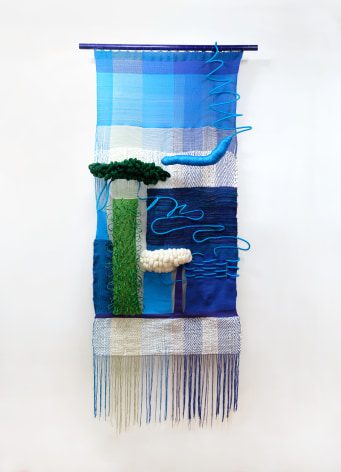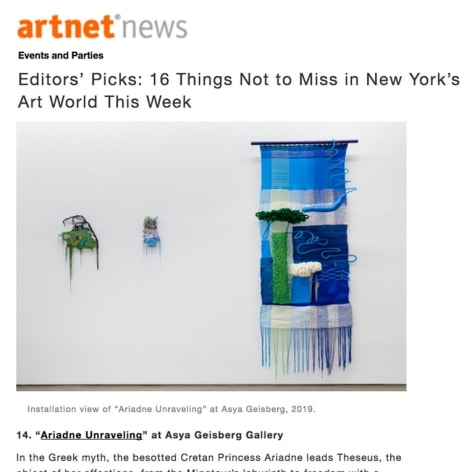
Asya Geisberg Gallery is proud to present "Ariadne Unraveling", an exhibition of eight artists who work with weaving, tapestry, yarn and thread: Samantha Bittman, Liz Collins, Hannah Epstein, Desire Moheb-Zandi, Sophia Narrett, Arna Óttarsdóttir, Katarina Riesing, and Rachel Mica Weiss. Their work both deconstructs the woven medium and pushes it towards a multi-media approach, be it painting, sculpture, drawing, or installation.
Samantha Bittman uses weaving as both a medium and a subject, working within the limitations set by a 12-harness floor loom. Bittman is inspired by the history of weaving technology, and how, despite major leaps in innovation, including the full automation of looms, the basic over-under interlacements of the warp and weft has never changed.
Liz Collins employs a range of materials and incorporates vivid palettes and dynamic patterning to create work that straddles the divides between the functional, the decorative, and the expressive. Her projects vary in scale, from the object-based to the immersive and architectural. Consistently intermingling fashion, furniture, and objects with woven thread or yarn, Collins has created a multi-disciplinary ecosystem where yarn reigns.
Hannah Epstein blurs the lines between folk craft, popular culture and contemporary art. As a trained folklorist, Epstein advocates for a deeper understanding of storytelling and its crucial role in the construction of reality. Her work aims to turn passive voyeurs into active players through themes of "play".
Desire Moheb-Zandi forged her personal and cultural identity through hours spent watching her grandmother weave in her childhood home in Turkey. Since relocating to the U.S., Moheb-Zandi has expanded the language of her weavings by mining countless sculptural possibilities, and combining found materials such as plastic and rubber with traditional modes of textile fabrication.
With a mixture of vulnerability and satire, Sophia Narrett sews together sexual narratives, combining images gleaned from the Internet and reality TV with her own memories and fantasies. The narratives explore the social implications of images, the collective unconscious, and the freedom and restraints of femininity.
Moving away from the geometric patchwork of traditional patterns, Arna Óttarsdóttir creates loose compositions of intentional and haphazard edits. The imagery is derived from drawings, doodles, and small notes from her sketchbooks, where she does not select the final motif based on refined finish, but rather on the possibility of future exploration. The textiles are made without batting or backing, giving the viewer insight into moments of resistance to a predestined outcome on the loom.
Working with dye, embroidery, and silk, Katarina Riesing fragments the human body in humorous and awkward ways. Close-ups of lingerie and sexualized body parts feel deeply personal, even as the figures may be unidentifiable. Her small paintings confront with individually painted hairs and moles, while the painstaking embroidery adds a subtle decoration.
The site-specific sculptural installation by Rachel Mica Weiss addresses the window and architecture of the gallery through careful use of scale, and diaphanous light-scattering. The installation uses the basic process of warping--measuring and tensioning hundreds of warp threads--and the basic structure of a loom--vertical threads stretched across two wooden bars. Viewers are allowed to feel a visceral awareness of their own comparatively diminished scale as they confront the work.

